The late August sun glinted through the trees along the ridgeline above. I was alone, putting together a remote stock water system in an essential wilderness, with a fire pump, 300 feet of surplus firehose and two 1000 gallon poly tanks. I had pulled the hose-lay on foot over my shoulder up a steep thickly forested hillside starting at a tiny pristine creek, carrying cold and crystalline clear spring water, the molecules of which would eventually find their way to the salt waters of the Pacific Ocean, nearly 1000 miles away.
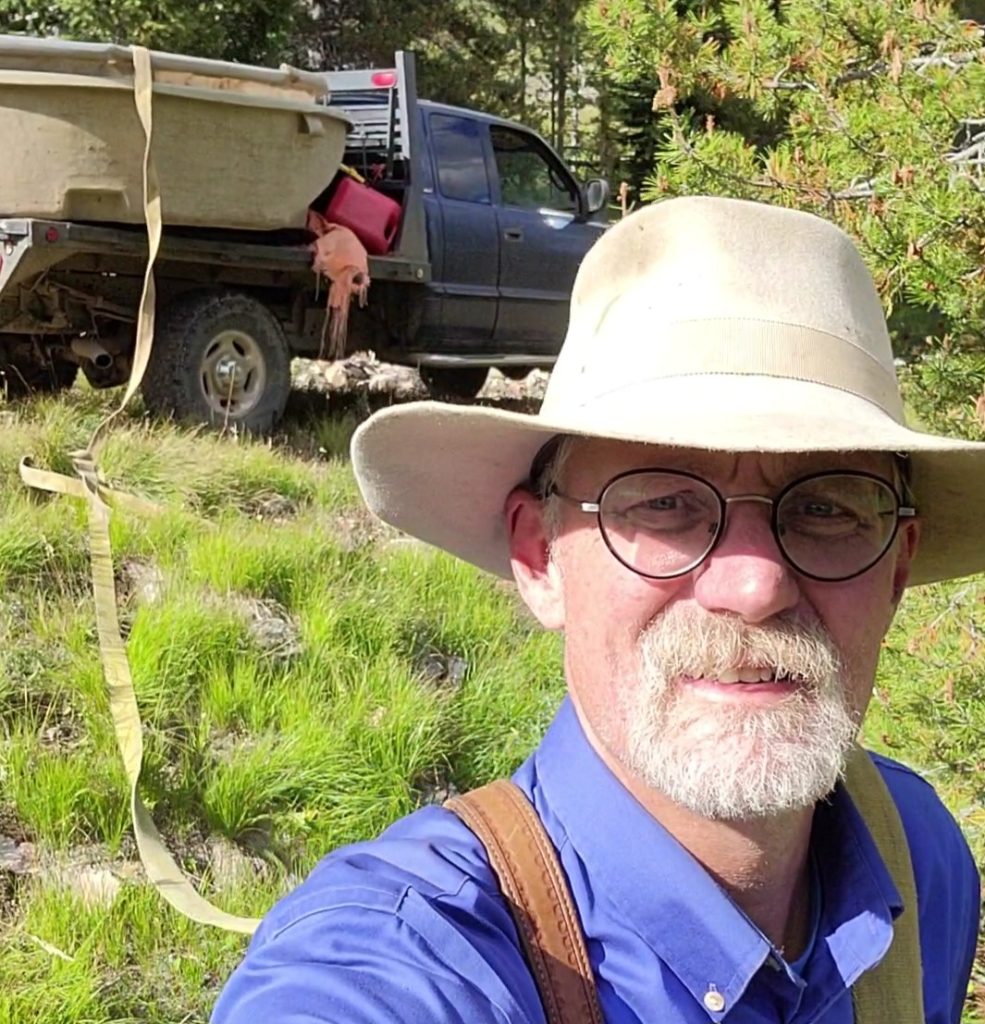
And they were thirst quenching molecules. I drank my fill from my cupped hands in the tiny pool that I placed my draft line basket strainer (keeps trout in the creek instead of the tank!). I thought the same thought I usually had when I drank directly from one of the spring fed creeks on the range. Never before had I tasted such beautiful waters.
The slight sound of an engine stopped me in my up-and-down traverse of the spruce and fir subalpine forest. I cupped my ear to trace the sound. It was a bush plane, likely shuttling elk hunters on scouting trips in the Frank Church Wilderness, the largest wilderness in the lower 48 states, the boundary of which was just 6 miles away.
I was hoping it was the sound of a 4-wheel drive bumping along the 45 mile two track that brought me here. In it would be Josh and Clinton, the bed of the truck full of camp and more stock water gear. I last saw them 5 hours ago, and I was beginning to be concerned that something went wrong.
It could be anything. Flat tires are so commonplace on these rocky roads that we usually bring two spares. Trucks slide off the road unexpectedly, as the tracks are narrow, and visibility is often nil with the branches of brush and trees across the windshield while pressing against doors and pushing mirrors flat against the door. Or, we find ourselves hopelessly mired in deep goo in rainwater ponds and puddles in the tracks that turn out to be bottomless. We’ve had 3 trucks start on fire with the arduous climb. What we ask of the metal and machines was never considered by auto engineers. They simply are not made for where we go.
As it made a low pass over the meadow, the brightly sunlit white body of the Cessna aircraft made a stark contrast to the deep azure in the darkening sky. Perhaps the pilot wondered what was going on down there; after all, my stock setup was nearly 50 miles from any cattle ranch in the dense forests and situated just a few thousand feet below the “goat rocks” and snow patched alpine tundra of the Taylor Massif.
The sun now hopelessly sank behind the trees.
I hastily strung poly-strand hotwire on thin fiberglass posts around a 2-acre area inclusive of the tanks and hooked it up to a solar powered fence charger. After dropping a bundle of polywire into the clear waters of the creek for grounding, I tested the wire for power. The crack of a blue spark reverberated against the thick subalpine fir bounds of the meadow. Those 7000 volts would do against wolves perusing the wire at night and keep the beeves in.
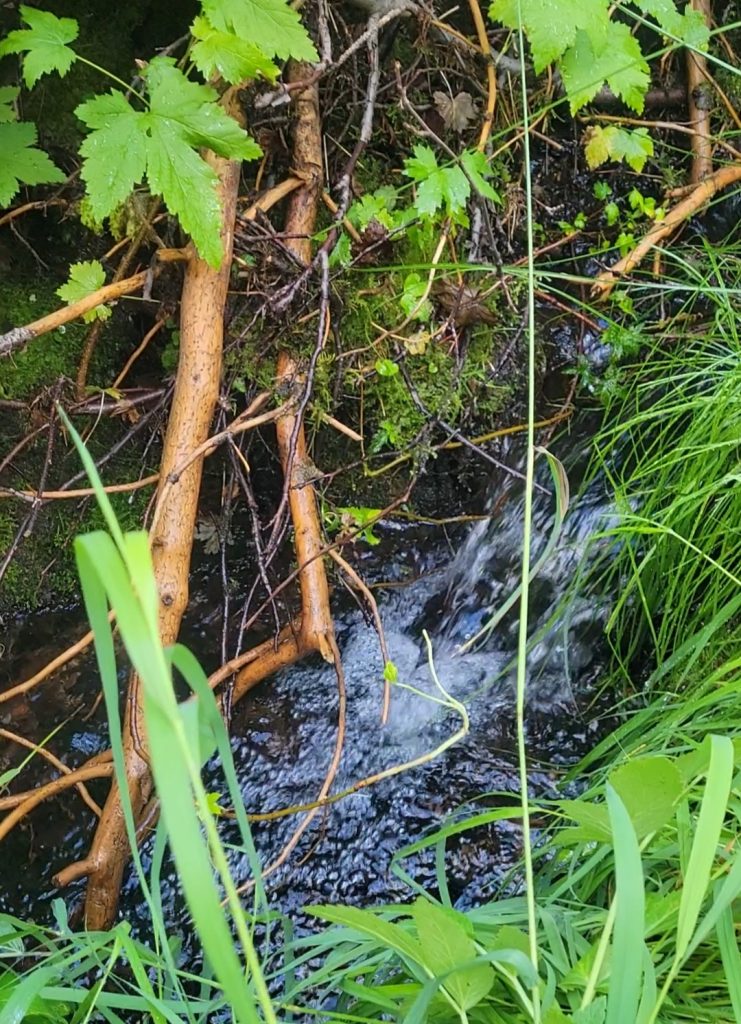
I jumped up into my own 4 wheel drive, and headed the way Josh and Clinton were supposed to come from. I was hoping to meet them, but even more, I was hoping to spot crew-boss Linnaea and her 3 person crew picking their way through thick forest and steep mountainside with several hundred head of Alderspring beeves.
It was for the cows I was putting up my water system. It was our highest camp ever—new country for us, completely unexplored by Alderspring. Meadows created by decades-old wildfires now sported abundant grasses and forbs. Subalpine meadows covered filled depressions where glacial tarns and ponds once were. At this elevation, I saw no signs of human activity other than the little two track I drove.
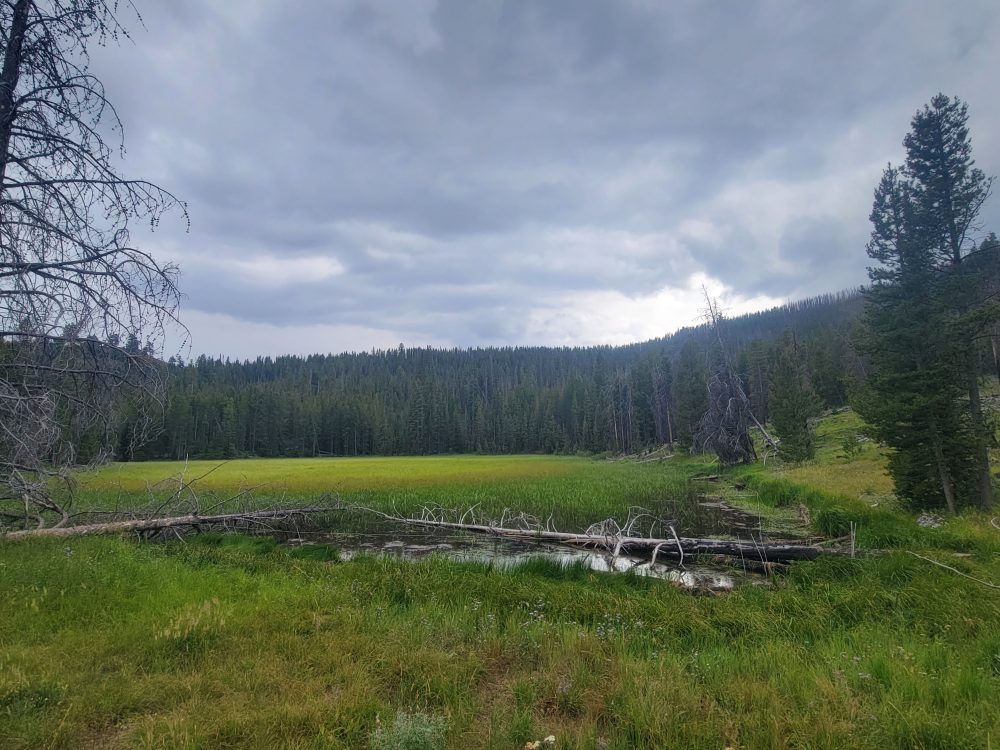
Some of the lower country below our new camp spot had been sporadically logged many decades ago. These areas are open canopied fir forests with verdant green and parklike understories. All in all, it would be a great way to end the grazing season with wild plant diversity.
I bumped along the logging trail toward the last camp that Linnaea and crew had left in the early morning. It was nearly 6 miles away, and nearly 1000 feet lower than my new camp placement. Distance to trail those cattle wasn’t the worst of it; more so, it was about the terrain. As I rounded a rocky point, I was offered a sweeping 60-mile view. I could see no sign of human habitation anywhere—only roughly timbered peaks and down below, long sagebrush valleys). At this vantage point, the terrain close at hand came into sharp focus. There were massive cliffs poking out of great mountainsides cloaked by thousands of acres of dark, thick timber slashed open by rockslides. Steep valleys were filled with broad boggy meadowed meanders dotted with beaver dams.
I hit the brakes and shut off the truck and reviewed my decision-making paradigm to even recommend bringing our black Angus cattle here. I played back my conversation with Linnaea several days before.
“It’s this spot. There’s a little meadow, here, where we can pasture the horse string,” I told her as we checked out her the mapping app on her phone. I “dropped a pin” on her screen to mark it, a dot in a seemingly unbroken area of dense timber. Mountain-skirting clouds obscured part of the view in the satellite image. Latitude and longitude coordinates dutifully popped up in the lower part of the touchscreen. The “Get Directions” icon glowed next to them.
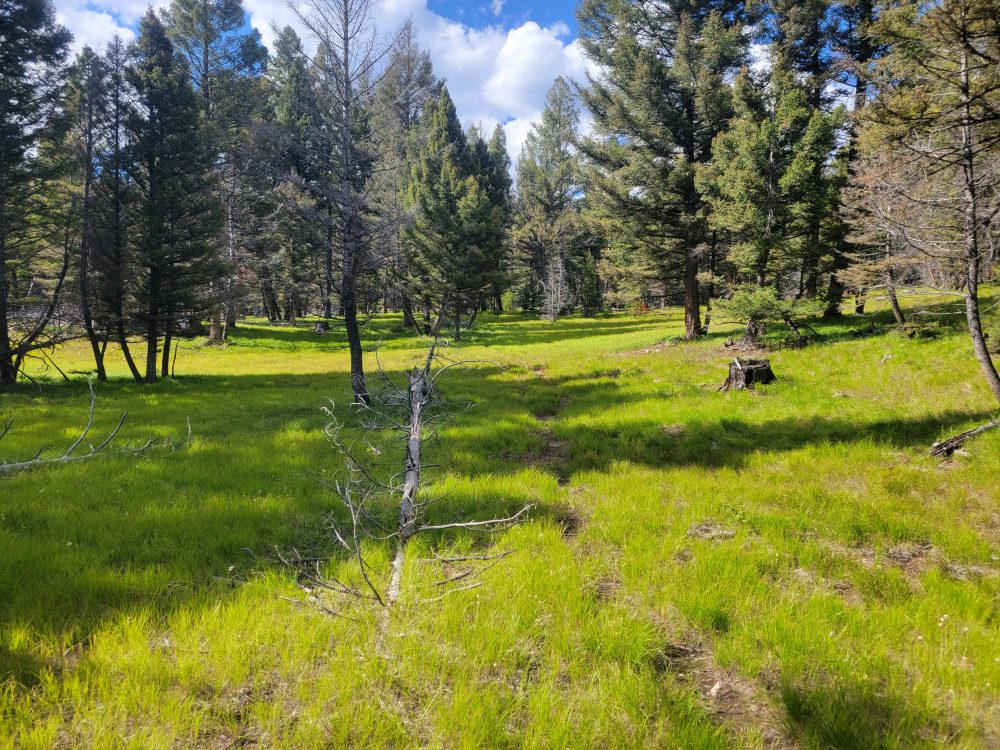
We both knew it would be meaningless to click it. There were no roads, no highways, towns or exits. There were dirt tracks and they were very few. In a word, it was trackless, except for those left by bears, mountain lions, wolf packs, deer, elk and an occasional moose.
“There’s no fording creeks for you, you know.”
She nodded. Linnaea knew the drill. Cows, creeks and fish don’t have any business mixing, and we wanted to do all we can to conserve those critical riparian habitats. We are 100% committed to ensuring that our bovines never interacted with the piscine.
It wasn’t only about the fish; it was about birds, plants and beavers. It was even about us. When we live up in those mountains with our beeves, we drink out of any of the creeks (without filtration). It’s because there’s no cow manure in them, as we don’t allow our beeves to access them. It’s why we create remote watering sites with pump and hose.
A pika squealed from the steep rock-strewn mountain slope I was parked above. The alpine round-eared cousin to rabbit stood on a boulder and barked at me, and in that moment, it underscored the doubt that I now was tendering about my latest hare-brained idea. Here was this tiny animal, a resident only of the wildest alpine parts of North America asking what in the heck I was doing there and how I expected to graze cattle up there.
I scanned the black forest across the valley, looking for a sign of black hide in it. Nothing. No tracks in beaver meadows. Nearly 400 head of cattle, invisible.
Hopeless, I started the pickup and kept crawling down the narrow cat track that would eventually cross the Middle Fork valley. The road presently became literal solid granite boulders with no gravel or dirt to hold them together. They rocked and rolled under the lug tires of the Dodge, making an almost ceramic grinding noise. When I finally neared the canyon, rock became mud, and thick alder and willow brush obscured the road and swept though my open window as I approached the whitewater roar of the Middle Fork.
Just as I was about to cross the log bridge across the creek, I happened to look out the window down at the mud.
There were hoofprints. Hundreds. Not elk. Cattle.
I slammed the truck in park, and looked at the tiny bridge in disbelief. It was only 9 feet wide, crossed the roaring creek, and was surrounded by almost impenetrable-to-human forest. And yet, somehow, Linnaea and her crew had found this one spot to cross the creek horseback with several hundred head of cattle, leaving the stream clean and 100% pristine.
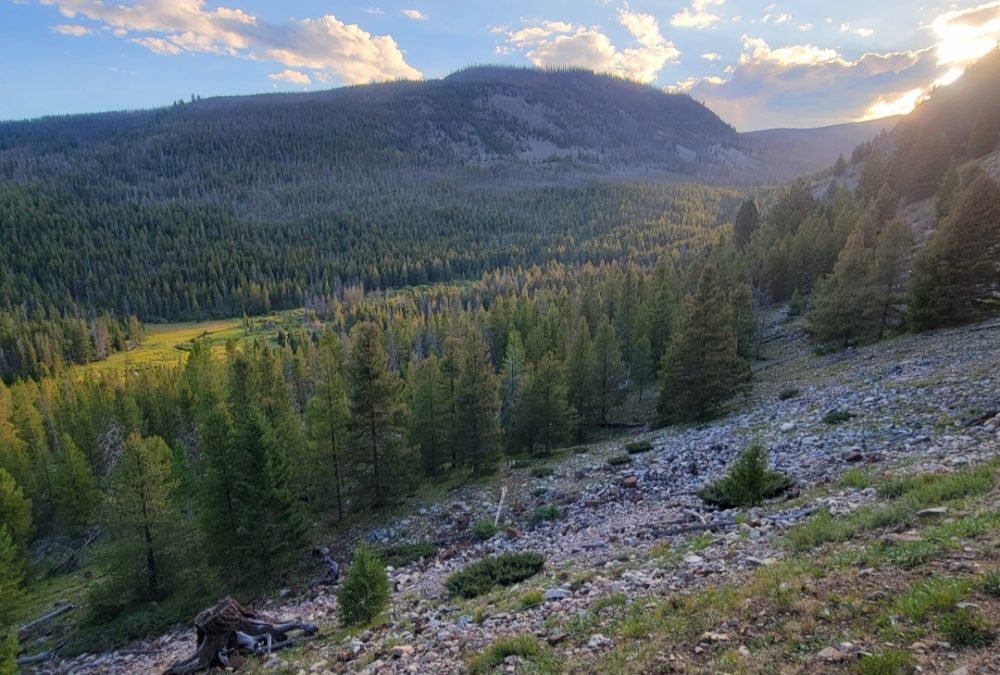
I heard an engine. In a moment, Clinton and Josh broke into the opening through overhanging brush on the two track from the other way with their high clearance rig, covered with dirt.
“What happened to you?” I asked.
“We got stuck in deep mud. It took us about 2 hours, but we were able to use a ratchet strap to get us out.” Josh was smiling proudly. Cowboy ingenuity.
We jockeyed the trucks around by the bridge (the only opening in the thick timber) and headed back to find the crew and cattle. It wasn’t long before the tracks disappeared from the road. A tiny strip of grass and forest between cliffs headed straight up the mountainside. It was steep enough that most horsemen I knew wouldn’t attempt it. Judging by the sweep of the grass, she took them all up there. And they were gone.
I got back in the truck, hoping to spot them so I could gauge their time against the oncoming loss of light. Twilight was long in the mountains after sunset behind high ridges, but I figured we only had another 45 minutes. A half moon already had risen, and would add a little help to the sojourning crew.
In another mile or so, I thought I heard something. Border collie Clyde heard it too, pointing with ears erect and a slow wag. He sniffed the air, and I shut the truck down.
A human voice came and went on the wind. It was daughter Annie, and one of our co-crew members, Bryce, talking loudly across the noise of cattle punching through thick brush. I could spot them straight up on the ridge, nearly 1000 feet above us, crew horseback guiding cattle in dense timber and rocks. They were heading for a high saddle above them; unbeknownst to me, Linnaea had decided to bushwhack literally over a trackless, trail-less mountain pass to grab a short cut to camp. I checked my map to see what she was thinking. If her plan worked, she could be at my new camp setup hours before she would if she followed the track I drove. She would be there at dark, instead of long after.
Clyde and I reloaded as Clinton and Josh pulled up. “They’re up there!” I pointed.
Josh said two understated but appropriate words: “That’s impressive.”
We rolled into camp just as darkness descended. Josh and Clinton went right to setting up horse grass and another tank for horses. I went right to putting up a tent for Annie and Linnaea to “spike out” in right next to the cattle. If the cattle are bedded close to camp, then spike camp is unnecessary. If camp is miles away (as it still was, and would move tomorrow to catch up with crew and cattle) we place one or two members out with the cattle for the night. That way, if there is a wolf attack in the night, there are humans to ward the predators off. Our first go-to response to wolf howls in the night is to set up some LED lights around the cattle, and so far, it has worked. Our second response is to fire a shotgun or pistol in the air over their heads, but we have yet to do that with wolves.
Non-lethal interaction for us is just like keeping out of the creeks. It’s a must have. Our cattle take only grass, and that, only once every 3 or 4 years in a particular area. We’ve actually timed the grazing period that our cattle actually graze on a given acre on that 3 or 4 year interval average. The amount of time?
Five to ten minutes.
So the impact is very short lived. It’s because we believe that’s how these plants adapted. Bison, pronghorn, deer and wild sheep grazing was common throughout all of our wild mountain country before European settlement, but it was non-continuous, short in duration (getting moved by predators often), and was typified by very long rest periods (sometimes as long as 15 years).
Back to the wolves: we have yet to lose any of our beeves to the big canids after we started living with the cattle (we lost many cattle before we started camping with them; the wolves appear to be very adverse to human encounters). It’s why Linnaea and her sister Annie would spike out this night 50 feet from their herd in one of the wildest regions of the lower 48.
As I set up their white canvas domicile (important in case the herd stampedes through the hotwire so the girls don’t get trampled in their bedrolls—night stampedes have happened to us!), I listened to the hills quieting around me. There was the whoosh of nighthawks, working the evening breeze, gathering the last of their insect prey before the night cooled. An owl hooted far down in the creek bottom.
And then, a distant voice. I recognized it. It was Annie. I looked up into the dusk at a mountainside covered with fir trees. Somewhere, somehow in that timber, they were guiding their stock down over logs and rocks, through bramble and brush, exactly down to the meadow where we placed the stock water and “night-ground.”
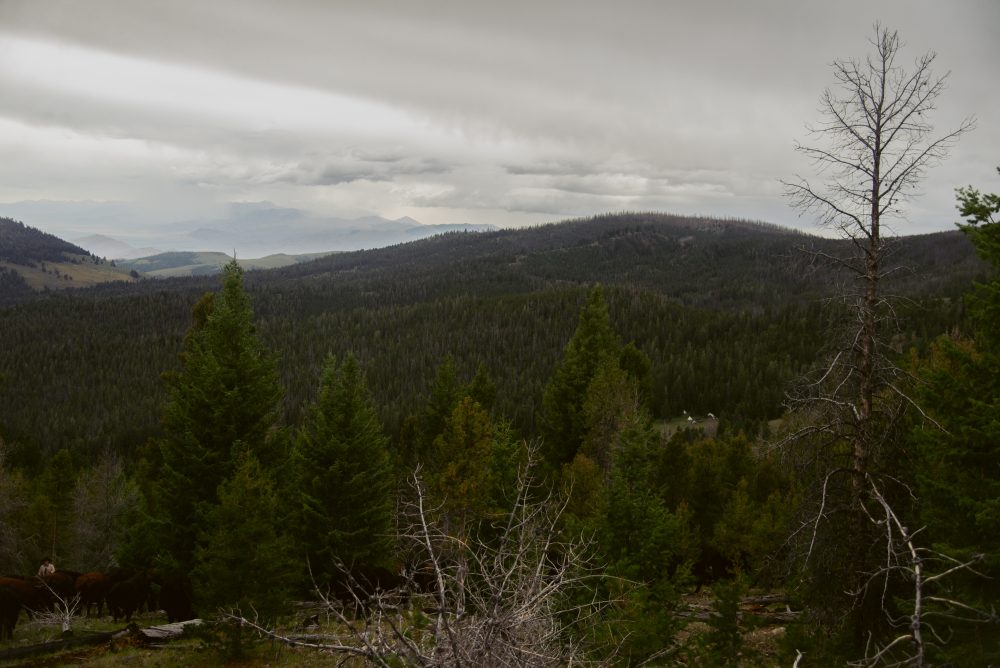
Soon I smelled bovine on breeze, and over the next half hour, beeves crossed from thick forest to meadow in a long thin line guided quietly by cowdog and crew. Thousand pound black steers emerged from dark trees, silently passing within a yard of Josh and I as we stood, as we were guiding them through the gate into their night-time safe and rest zone. They had eaten the whole day on the trail, and were belly full of green goodness.
They’d come to trust us, and we them. There’s a sort of beauty to this kind of husbandry between rider, horse, cow and dogs and how we live and work on the land together. It even extends to the wild animals, as when we are up there, we become part of the ecosystem.
We’ve lost that in so much of agriculture, and it shows. There’s stressed animals, monocultures on dirt, and humans in health crisis.
It’s not as hard as you’d think to switch directions. Certainly, husbandry can be a polar opposite to industrial farming, but the educator we’ve discovered that brings us back is very patient.
Nature is that teacher.
Happy Trails to you all.
Glenn

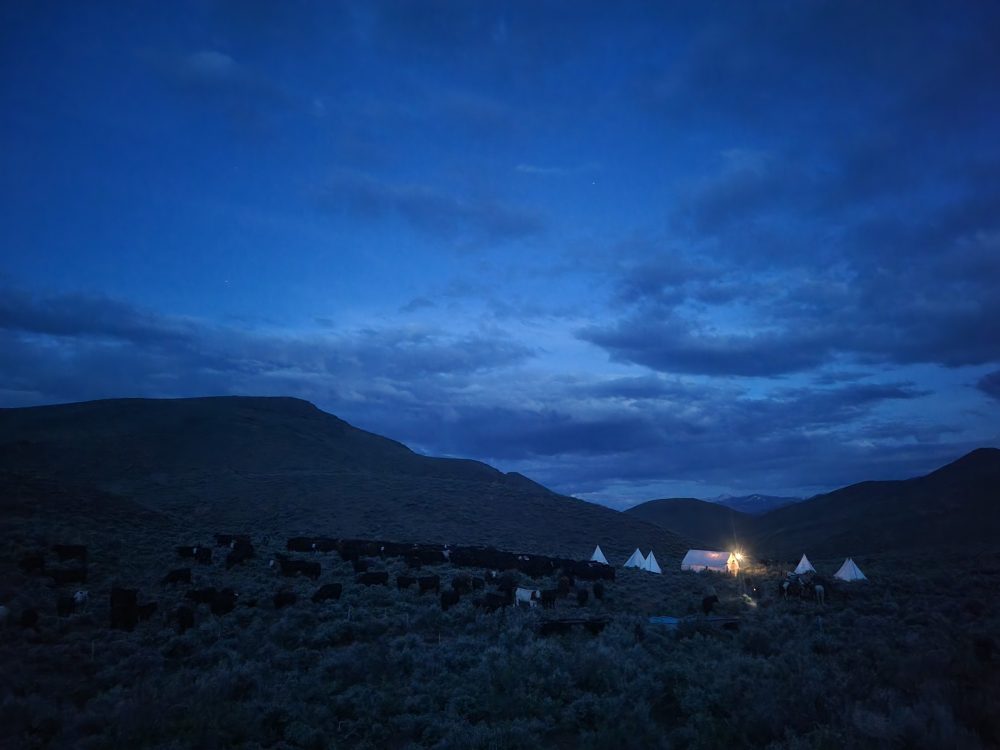
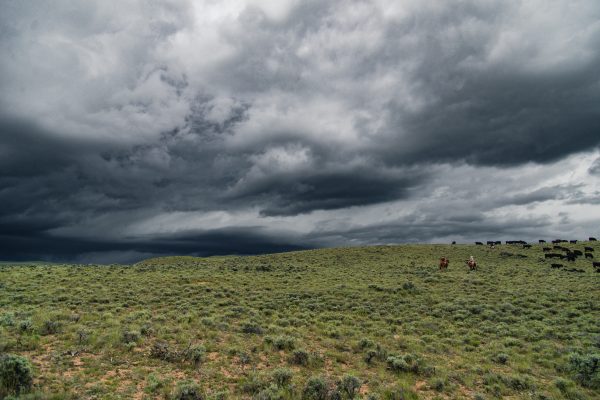

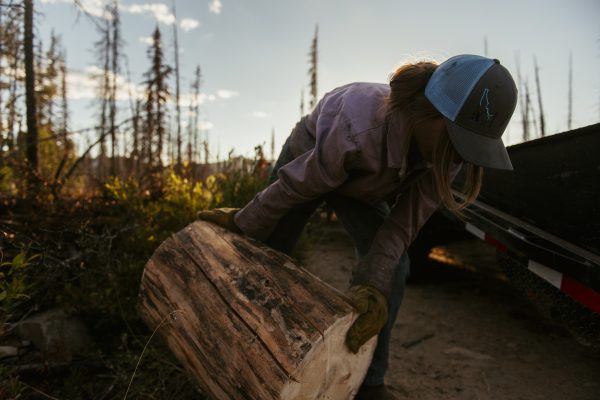
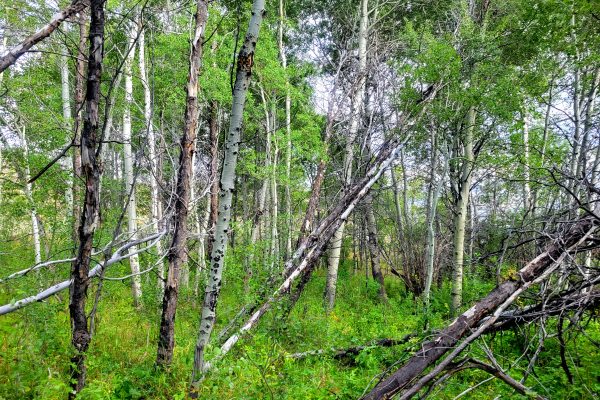

Shirley
Glenn, you and your family have taught so many cowhands and college students how to exist with nature, including animals, plants, weather and water. But there are not enough of you for this big country. We need to somehow train many many many more people on proper ranching techniques, animal husbandry and land management. We need to clone you!!
Leo Younger
Thank you for spelling out the details of the work, with photos to help us understand.